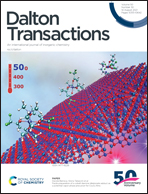Modification of ultra-micropore dominated carbon by O/N-containing functional groups grafted for enhanced supercapacitor performances†
Abstract
In our study, a simple method was employed to prepare ultra-micropore-dominated carbon materials with controllable pore size. A mass of heteroatoms was introduced by surface functional group grafting, resulting in enhanced electrochemical performance: the maximum specific capacity of 327.5 F g−1 was obtained at 0.5 A g−1 in 6 M KOH, while that of un-grafted original ultra-microporous carbon was only 188 F g−1, with long-term cycle stability (90.5% of the initial after 10 000 cycles), and excellent rate performance (over 82% at the current density from 0.5 A g−1 to 10 A g−1). The mechanism behind the improved performance was due to the presence of the introduced functional groups that improved the surface wettability of the material and provided additional redox active sites. Their synergistic effects promoted the enhanced electrochemical performance of the ultra-microporous carbon. This study provides a basis for the study of the energy storage mechanism of ultra-microporous carbon and the grafted modification of carbon materials with heteroatom-containing functional groups.



 Please wait while we load your content...
Please wait while we load your content...